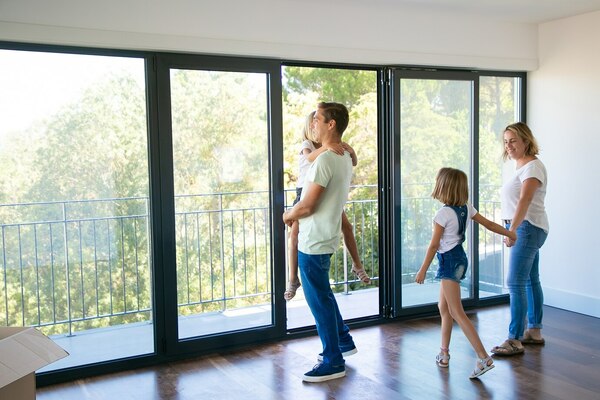Notifications
ALL BUSINESS
COMIDA
DIRECTORIES
ENTERTAINMENT
FINER THINGS
HEALTH
MARKETPLACE
MEMBER's ONLY
MONEY MATTER$
MOTIVATIONAL
NEWS & WEATHER
TECHNOLOGIA
TV NETWORKS
VIDEOS
VOTE USA 2026/2028
INVESTOR RELATIONS
DEV FOR 2025 / 2026
ALL BUSINESS
COMIDA
DIRECTORIES
ENTERTAINMENT
FINER THINGS
HEALTH
MARKETPLACE
MEMBER's ONLY
MONEY MATTER$
MOTIVATIONAL
NEWS & WEATHER
TECHNOLOGIA
TV NETWORKS
VIDEOS
VOTE USA 2026/2028
INVESTOR RELATIONS
DEV FOR 2025 / 2026
 Ainsley Briggs -
10 hours ago -
Other -
low e glass windows
argon filled windows
-
31 views -
0 Comments -
0 Likes -
0 Reviews
Ainsley Briggs -
10 hours ago -
Other -
low e glass windows
argon filled windows
-
31 views -
0 Comments -
0 Likes -
0 Reviews

When it comes to upgrading your home’s energy efficiency, comfort, and aesthetics, windows play a surprisingly powerful role. Today’s modern homeowners are increasingly turning to advanced window technologies to reduce utility bills and enhance indoor comfort all year round. Two standout innovations—low e glass windows and argon filled windows—are making headlines, and for good reason.
These high-performance window options not only look great but also work quietly behind the scenes to protect your home from harsh outdoor temperatures and harmful UV rays. Let’s dive into why these window upgrades are becoming a top choice in new builds and renovations alike.
Low E (low emissivity) glass windows are specially coated to minimize the amount of ultraviolet and infrared light that passes through the glass without compromising visible light. This thin, virtually invisible layer reflects heat back to its source, which means your home stays warmer in winter and cooler in summer.
Benefits of Low E Glass:
Improved energy efficiency: Reduces reliance on HVAC systems, cutting down energy costs by up to 30%.
UV protection: Blocks harmful rays that cause furniture and flooring to fade.
Comfort: Maintains consistent indoor temperatures, eliminating hot or cold spots.
Eco-friendly: Reduces your carbon footprint by limiting energy consumption.
Many homeowners appreciate the clarity and brightness that low E glass allows while still enjoying the insulation benefits. Whether you're building from scratch or replacing old panes, low e glass windows are a smart investment for long-term comfort.
Argon filled windows contain argon gas between their glass panes. Argon is a non-toxic, odorless, and denser-than-air gas that significantly improves the window’s insulation value. It slows the transfer of heat through the window, acting like an invisible thermal blanket.
Why Argon Is Better Than Air:
Thermal efficiency: Argon gas reduces thermal conductivity better than regular air.
Noise reduction: The denser gas also acts as a sound barrier, helping create quieter indoor spaces.
Moisture control: Prevents condensation build-up inside double or triple-glazed windows.
This invisible upgrade adds significant value to any home, helping to maintain indoor temperatures more effectively—especially when paired with other insulating technologies like argon filled windows.
Good news—you don’t have to pick one over the other. These two technologies are even more powerful when used together. A high-quality double-pane window that combines low E coatings with argon gas filling can achieve excellent insulation properties. Here’s how they compare side-by-side:
|
Feature |
Low E Glass Windows |
Argon Filled Windows |
|
Main Function |
Reflects heat and UV rays |
Slows heat transfer between panes |
|
Energy Savings |
25–30% reduction in energy use |
Adds an extra layer of thermal insulation |
|
Comfort |
Prevents heat loss/gain |
Maintains consistent indoor temperature |
|
Best Used With |
Gas-filled panes |
Low E coated glass |
Let’s look at an example: A family living in Salt Lake City upgraded their home with a combination of low E glass windows and argon filled windows last year. After six months, they reported:
A 20% drop in energy bills
Significantly reduced heat during summer
No more cold drafts in winter
A noticeable decrease in outdoor noise
These results aren’t unique. Across the country, homeowners are seeing tangible benefits from these upgrades, and homebuilders are making them standard in energy-efficient designs.
Q1: Are low E glass windows more expensive than regular windows?
A: Yes, they are slightly more expensive upfront, but the energy savings over time can easily offset the initial cost.
Q2: How long does the argon gas stay inside the window?
A: Argon gas can last 20 years or more, especially when the window seals are intact. Quality windows maintain their insulating performance for decades.
Q3: Will my houseplants still get sunlight through low E glass?
A: Yes, low E glass still allows in visible light but blocks harmful UV rays. Your plants will continue to thrive without the risk of sun damage to furniture.
Q4: Can I install these windows in an existing home?
A: Absolutely. Both low E and argon-filled windows are available as retrofit options and can be custom-fitted to older homes.
Q5: Are these windows safe?
A: Completely. Both the low E coating and the argon gas are non-toxic, and there’s no risk to homeowners even if the glass breaks.
Investing in low E glass windows and argon filled windows is a forward-thinking choice that pays off in energy savings, year-round comfort, and peace of mind. As building standards evolve and energy efficiency becomes more critical, these window technologies are no longer luxuries—they’re smart essentials.
Whether you’re building a new home or looking to upgrade, don’t overlook the power of advanced windows. They do more than let in light—they can transform the way you live.
